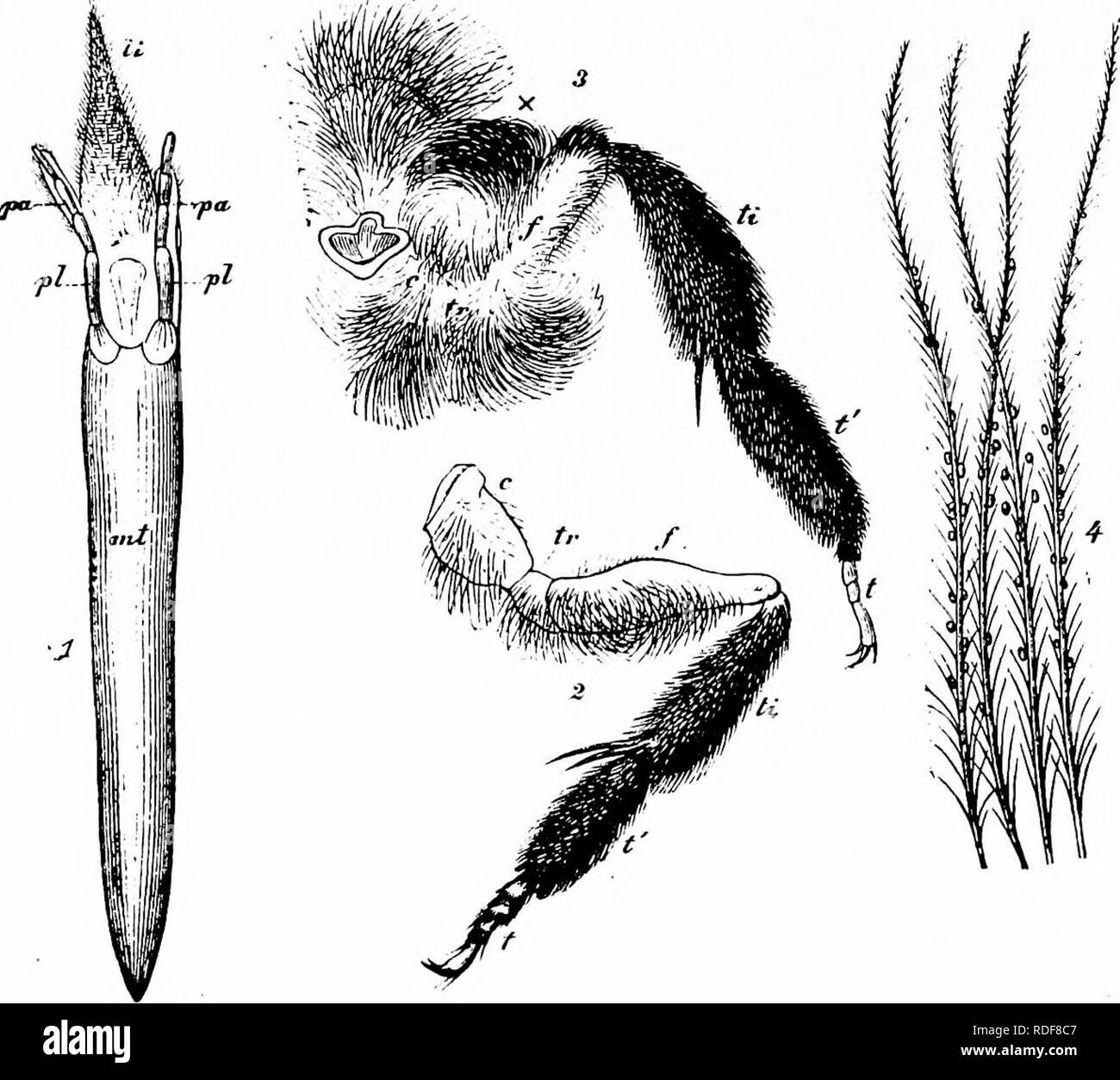. Handbook of flower pollination : based upon Hermann Mu?ller's work 'The fertilisation of flowers by insects' . Fertilization of plants. 148 INTRODUCTION the hind-legs are thickly covered with hair from the tibia to the coxa. Even the metathorax is sometimes provided with two well-developed tufts of hair, under which considerable quantities of pollen can be accumulated (H. Miiller, 'Fertilisation,' p. 51). Compared with the species of Sphecodes, those of Halictus and Anthrena have an advantage in that their basal tarsal joints are considerably broader, and the tarsal brushes are consequently

Image details
Contributor:
The Book Worm / Alamy Stock PhotoImage ID:
RDF8C7File size:
7.1 MB (352.2 KB Compressed download)Releases:
Model - no | Property - noDo I need a release?Dimensions:
1670 x 1496 px | 28.3 x 25.3 cm | 11.1 x 10 inches | 150dpiMore information:
This image is a public domain image, which means either that copyright has expired in the image or the copyright holder has waived their copyright. Alamy charges you a fee for access to the high resolution copy of the image.
This image could have imperfections as it’s either historical or reportage.
. Handbook of flower pollination : based upon Hermann Mu?ller's work 'The fertilisation of flowers by insects' . Fertilization of plants. 148 INTRODUCTION the hind-legs are thickly covered with hair from the tibia to the coxa. Even the metathorax is sometimes provided with two well-developed tufts of hair, under which considerable quantities of pollen can be accumulated (H. Miiller, 'Fertilisation, ' p. 51). Compared with the species of Sphecodes, those of Halictus and Anthrena have an advantage in that their basal tarsal joints are considerably broader, and the tarsal brushes are consequently more effective. These bees will therefore use exclusively or chiefly as larval food the pollen that is collected by the hairy covering of the hind- legs, whilst for the species of Sphecodes this method of collection is subsidiary.. Fig. 60. Halicttts attd Atrthrena (after Hermann Miiller). (i) Labium (lower lip) of Halictus quadricinctus F. 9 : '«A mentum (chin); it lig;ula (tongue); pa^ paraglossae (accessory tongues); //, labial palp. (2l Right hind-leg of the same bee. (3) Metathorax and right hind-leg of Anthrena ovina A7^. 9 ; X, right tuft of hair on the metathorax. Other references in (2) and (3) as in Fig. 58. (4! Single hairs from the body of an Anthrena ovina Klg: 9 , captured upon a flowering willow. To the feathery branches of these hairs numerous pollen-grains are sticking. As in all the three above-named genera the entire body is hairy, it follows that the bees in visiting numerous flowers cover themselves with pollen, which they subsequently remove with the tarsal brushes, so that the quantity heaped up on the special collecting-hairs is considerably augmented, especially as the hairs are mostly feathery. In Sphecodes the hair-covering of the body is very scanty. Only the legs are well covered, especially the outer sides of the posterior tibiae. The brushes on the inner side of the basal tarsal joints are somewhat better developed than in the genus Prosopis, a